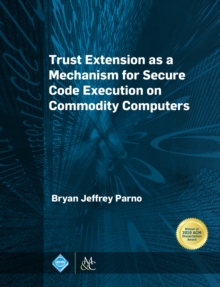
Description
The wireless medium is a shared resource. If nearby devices transmit at thesame time, their signals interfere, resulting in a collision.
In traditionalnetworks, collisions cause the loss of the transmitted information.
For thisreason, wireless networks have been designed with the assumption thatinterference is intrinsically harmful and must be avoided. This book, a revised version of the author's award-winning Ph.D. dissertation, takes an alternate approach: Instead of viewing interferenceas an inherently counterproductive phenomenon that should to be avoided, wedesign practical systems that transform interference into a harmless, andeven a beneficial phenomenon.
To achieve this goal, we consider how wirelesssignals interact when they interfere, and use this understanding in oursystem designs.
Specifically, when interference occurs, the signals getmixed on the wireless medium.
By understanding the parameters of thismixing, we can invert the mixing and decode the interfered packets; thus,making interference harmless.
Furthermore, we can control this mixingprocess to create strategic interference that allow decodability at aparticular receiver of interest, but prevent decodability at unintendedreceivers and adversaries.
Hence, we can transform interference into abeneficial phenomenon that provides security. Building on this approach, we make four main contributions: We present thefirst WiFi receiver that can successfully reconstruct the transmittedinformation in the presence of packet collisions.
Next, we introduce a WiFireceiver design that can decode in the presence of high-powercross-technology interference from devices like baby monitors, cordlessphones, microwave ovens, or even unknown technologies.
We then show how wecan harness interference to improve security.
In particular, we develop thefirst system that secures an insecure medical implant without anymodification to the implant itself.
Finally, we present a solution thatestablishes secure connections between any two WiFi devices, without havingusers enter passwords or use pre-shared secret keys.
Information
-
Download - Immediately Available
- Format:PDF
- Pages:173 pages
- Publisher:Association for Computing Machinery and Morgan & C
- Publication Date:01/06/2014
- Category:
- ISBN:9781627054751
Other Formats
- EPUB from £32.18
- Hardback from £55.99
Information
-
Download - Immediately Available
- Format:PDF
- Pages:173 pages
- Publisher:Association for Computing Machinery and Morgan & C
- Publication Date:01/06/2014
- Category:
- ISBN:9781627054751










